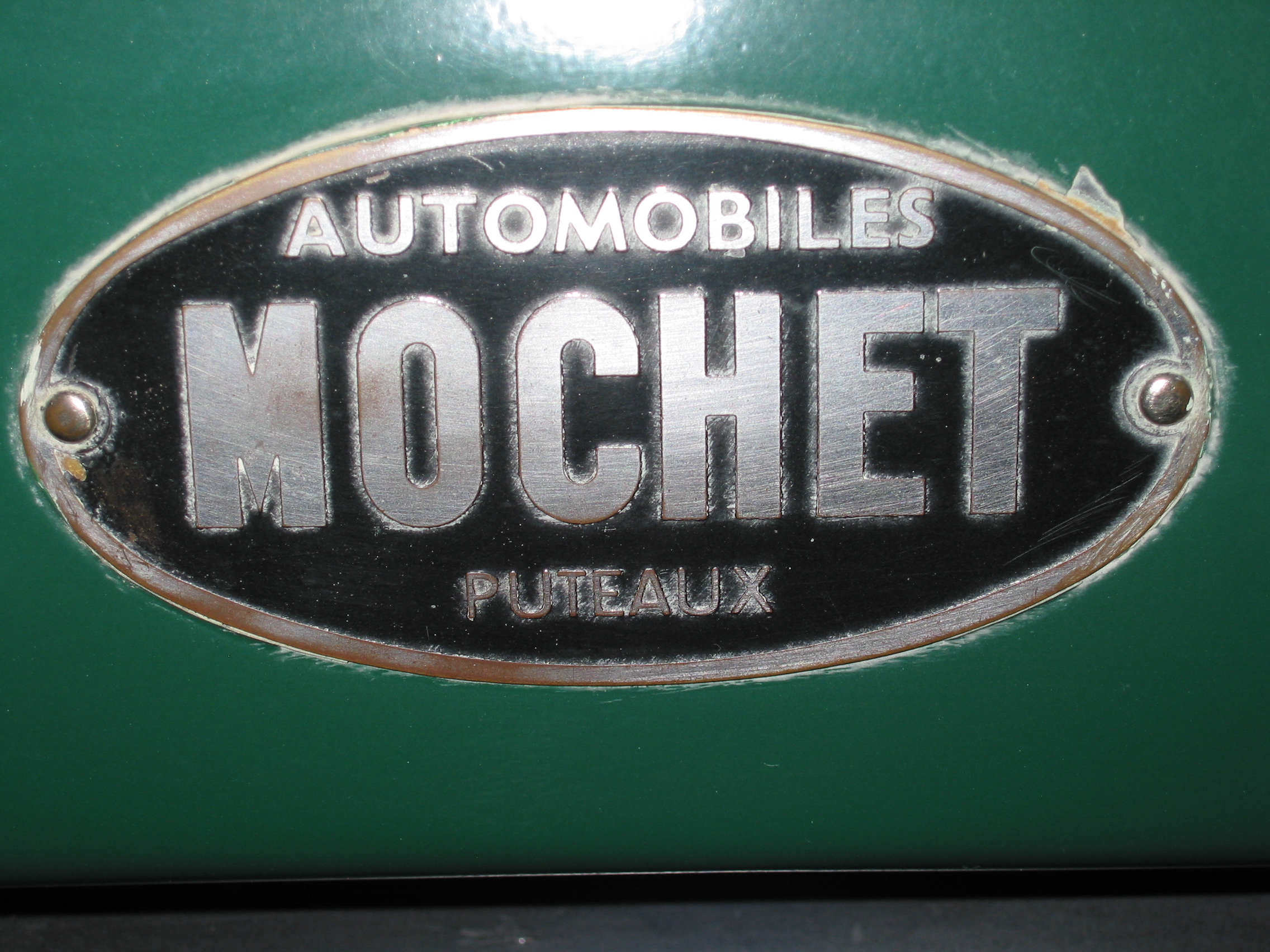Mochet on:
[Wikipedia]
[Google]
[Amazon]



 Georges Mochet began to produce cycle-cars at his, now-demolished, premises at 68, Rue Roque-de-Fillol at Puteaux in approximately 1946 and by about 1952 had progressed to more modern looking two seater micro-cars and powered two-wheelers. In 1958, with approximately 3,000 vehicles manufactured, production ended.
Georges had inherited the business from his father, (1880–1934) under whose leadership it had, after the
Georges Mochet began to produce cycle-cars at his, now-demolished, premises at 68, Rue Roque-de-Fillol at Puteaux in approximately 1946 and by about 1952 had progressed to more modern looking two seater micro-cars and powered two-wheelers. In 1958, with approximately 3,000 vehicles manufactured, production ended.
Georges had inherited the business from his father, (1880–1934) under whose leadership it had, after the
Mochet.org
{{French bicycle manufacturers Defunct motor vehicle manufacturers of France Car manufacturers of France Cycle manufacturers of France Companies based in Île-de-France

First World War
World War I (28 July 1914 11 November 1918), often abbreviated as WWI, was one of the deadliest global conflicts in history. Belligerents included much of Europe, the Russian Empire, the United States, and the Ottoman Empire, with fightin ...
, produced children's’ pedal cars and, between 1924 and 1934, the ' Vélocar' lightweight, pedal-powered, cycle-car. In 1934, the firm's revolutionary 'Vélo-Vélocar' recumbent bicycles, ridden to record-breaking speeds by Francis Faure
Francis Faure was a French bicycle racer who captured the world hour record in July 1933 on a Vélocar. This prompted the Union Cycliste Internationale (UCI) to restrict bicycle designs for all future competitions.
Early life
Francis was brother ...
, were banned from cycling competitions by the Union Cycliste Internationale
The ''Union Cycliste Internationale'' (UCI; ; en, International Cycling Union) is the world governing body for sports cycling and oversees international competitive cycling events. The UCI is based in Aigle, Switzerland.
The UCI issues raci ...
. Charles Mochet died soon after.
The continuation of recumbent cycle production and of the cycle-cars, popular in occupied, no-petrol France, and the subsequent switch to micro-cars under Georges after the Second World War
World War II or the Second World War, often abbreviated as WWII or WW2, was a world war that lasted from 1939 to 1945. It involved the vast majority of the world's countries—including all of the great powers—forming two opposi ...
was therefore a direct evolution from the pre-war business built up by his father.
Under Georges Mochet the cars were powered by small single cylinder two stroke Ydral
List
Notes
*a. Also advertised in publicity material with Ydral 125 cc or Sachs 200 cc or Maico 250 cc engines. The 250 cc version has four wheels, all others have three.
*b. One other model was listed in publici ...
engines initially of 100 cc installed at the back and driving the rear wheels. By the time manufacturing ended, the engine size had increased to 175 cc. During this time the body work also evolved, with improved weather protection a welcome aspect of later models.
There is a Mochet three-wheeler cycle car in a museum dating from 1947, described by one commentator as “very rustic”, but regular production dates from approximately 1950 which some sources take as marking the birth of the Mochet autobusiness. 1949 or 1950 saw the arrival of the “Type K” cycle-car with its 100 cc engine. This was replaced in 1952 by the “Type CM Luxe”, the engine size now increased to 125 cc. The “Type CM Grand luxe” for 1953 retained the 125 cc and added a new “ ponton” format body, with headlights set into the front wings. The Mochet now looked like a normal car, but smaller, at just 2550 mm long and 1130 mm wide, recalling the pedal cars produced under the patron’s father before the First World War. Despite the modern body-work the 1953 “CM Grand Luxe” retained the same 1700 mm wheelbase and 980 mm front-track of the original “Type K” cycle-car.
In October 1953, at the Paris Motor Show
The Paris Motor Show (french: Mondial de l'Automobile) is a biennial auto show in Paris. Held during October, it is one of the most important auto shows, often with many new production automobile and concept car debuts. The show presently take ...
, Mochet exhibited a modern looking small cabriolet bodied car closer in size to a (small) normal car. The car was powered by a twin cylinder 748cc unit providing a claimed 40 hp of output. The unit was based on the engines used by the BMW motor bikes used by the police. However, this Mochet 750 never progressed beyond the prototype stage.
See also
*Velomobile
A velomobile (); velomobiel, velo, or bicycle car is a human-powered vehicle (HPV) enclosed for aerodynamic advantage and/or protection from weather and collisions. Velomobiles are similar to recumbent bicycles, pedal go-karts and tricycles, but ...
References
;Notes ;Bibliography * Harald H. Linz, Halwart Schrader: ''Die große Automobil-Enzyklopädie'', BLV, München 1986, * G.N. Georgano: ''Autos. Encyclopédie complète. 1885 à nos jours.'' Courtille, 1975 (French)External links
Mochet.org
{{French bicycle manufacturers Defunct motor vehicle manufacturers of France Car manufacturers of France Cycle manufacturers of France Companies based in Île-de-France